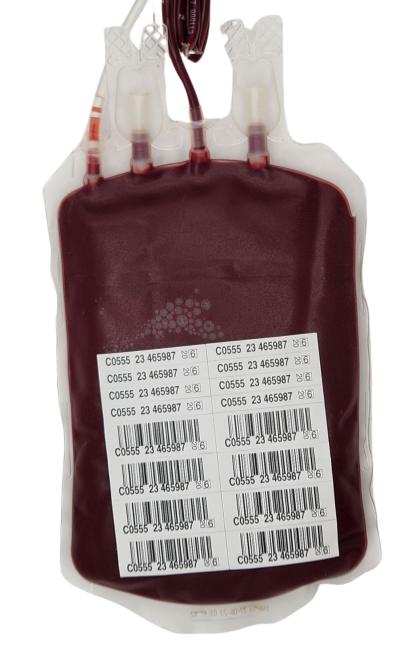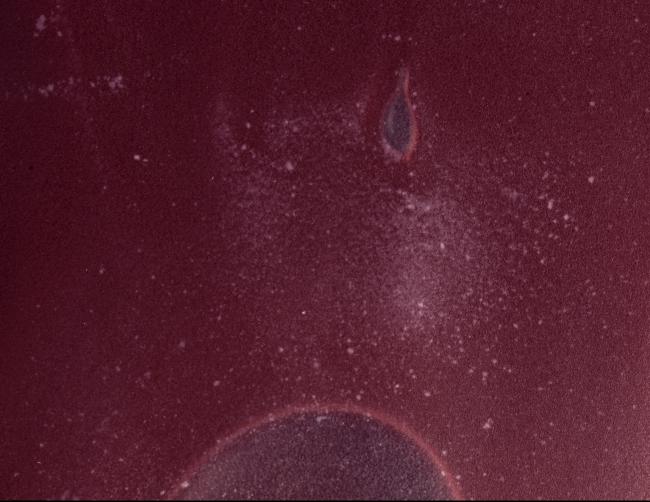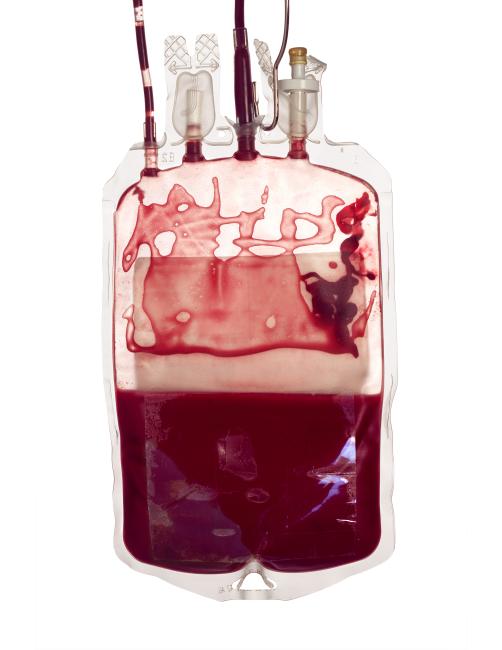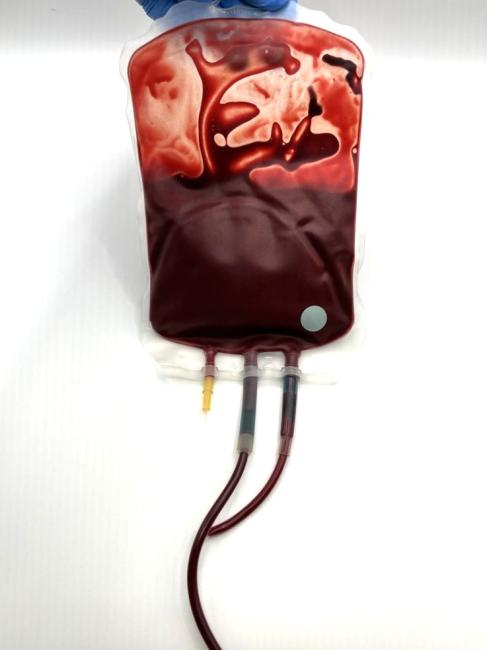Red blood cells: Particulate matter
Colour legend
Example(s) of typical appearance
Example(s) of a change in appearance
Particulate matter can be the result of blood collection and/or component manufacturing processes. Composed of platelets, white blood cells, RBCs, and/or fibrin, particulate matter may increase during storage of an RBC unit.
There are several categories of particulate matter that may be found within RBC units:
- Clots and fibrin strands
- Clots and fibrin strands result from the activation of the clotting processes and can be a mixture of clotting proteins (including fibrin) and platelets. Blood is collected and processed in bags that contain anticoagulants to inhibit the clotting processes. RBC units containing clots and/or fibrin strands should NOT be transfused and should be reported to Canadian Blood Services using the feedback form on blood.ca.
- Clots may appear as small to large dark red or purple masses that do not dissipate with gentle manipulation.
- Cellular aggregates
- Cellular aggregates may appear as white and opaque masses that do not dissipate with gentle manipulation. RBC units containing cellular aggregates should NOT be transfused and should be reported to Canadian Blood Services using the feedback form on blood.ca.
- Cellular aggregates may appear as white and opaque masses that do not dissipate with gentle manipulation. RBC units containing cellular aggregates should NOT be transfused and should be reported to Canadian Blood Services using the feedback form on blood.ca.
- White particulate matter (WPM)
- WPM is a non-cellular material and is a normal constituent of blood. The presence of WPM does not render a blood component unacceptable for transfusion.
- WPM is a lipid-rich material that appears white in colour and variable in shape, from flattened specks to a greasy film. Generally, there are low numbers of WPM per RBC unit.
- Cold agglutinins
- Cold agglutinins form large RBC masses that do not dissipate with gentle manipulation to smaller RBC aggregates. Blood components containing cold agglutinin masses should NOT be transfused and should be reported to Canadian Blood Services.





